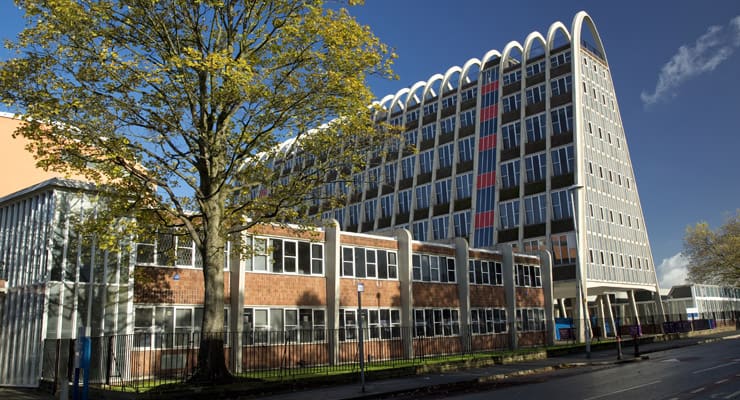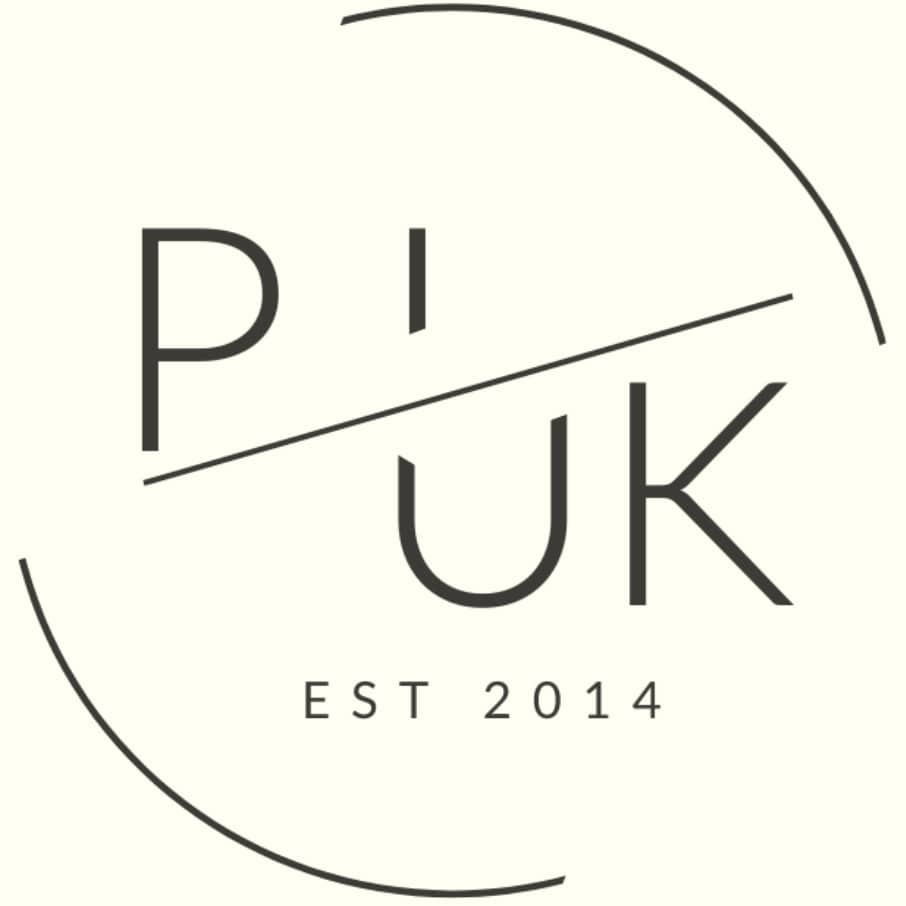Discover The Highest Manchester Rental Yields & Average Rents
Manchester rental yields range from 3.8% to 7.2% across different postcodes, with the average rental yield sitting at 5.8% (October 2025). Average rent in Manchester varies significantly by area, from £209 to £368 per week, creating distinct opportunities for property investors building their portfolios.
Understanding rental yields by postcode is essential for making informed investment decisions. A good rental yield in Manchester is generally considered to be 6% or above, with areas like M11, M18, and M14 currently leading the market. Manchester's growing population and strong rental demand across its 32 postcode districts make it one of the UK's most attractive buy-to-let markets.
This guide breaks down Manchester rental yields and average rents by postcode area, helping you identify high-performing locations across Manchester City and Greater Manchester (including Bolton, Bury, Rochdale, and Oldham). Use our property investment checklist alongside this data to evaluate your next purchase.
Article updated: October 2025
Manchester Rental Yields Market Overview
Manchester's rental market shows significant variation across postcodes, with yields ranging from 3.8% to 7.2% and average rents from £209 to £368 per week:
- Rental yield range: 3.8% (M21) to 7.2% (M11) across Manchester postcodes
- Average rental yield: 5.8% across 32 postcode districts
- Weekly rent range: £209 (M26) to £368 (M14) (monthly: £907 to £1,596)
- Highest rental yields: M11 (7.2%), M18 (7.3%), M6 (6.7%), M23 (6.4%)
Contents

-
by Robert Jones, Founder of Property Investments UK
With two decades in UK property, Rob has been investing in buy-to-let since 2005, and uses property data to develop tools for property market analysis.
Property Data Sources
Our location guide relies on diverse, authoritative datasets including:
- HM Land Registry UK House Price Index
- Ministry of Housing, Communities and Local Government
- Ordnance Survey Data Hub
- Propertydata.co.uk
We update our property data quarterly to ensure accuracy. Last update: October 2025. All data is presented as provided by our sources without adjustments or amendments.

Which Areas of Manchester Have The Highest Rental Yield?
Gross Rental Yields in Manchester (%)
Updated October 2025
The data represents the average gross rental yield in Manchester, calculated using a snapshot of current properties for sale and properties for rent. These figures are based on asking prices.
| Rank | Area | Gross Rental Yield |
|---|---|---|
| 1 | M18 (Gorton, Abbey Hey) | 7.30% |
| 2 | M11 (Clayton, Openshaw) | 7.20% |
| 3 | M14 (Fallowfield, Rusholme) | 7.80% |
| 4 | M17 (Trafford Park) | 7.10% |
| 5 | M6 (Salford, Pendleton) | 6.70% |
| 6 | M50 (Salford Quays, MediaCity) | 6.60% |
| 7 | M3 (Salford Central, Blackfriars) | 6.50% |
| 8 | M4 (Northern Quarter, Ancoats) | 6.50% |
| 9 | M23 (Wythenshawe) | 6.40% |
| 10 | M5 (Ordsall, Salford University) | 6.30% |
| 11 | M24 (Middleton) | 6.30% |
| 12 | M40 (Collyhurst, Miles Platting) | 6.30% |
| 13 | M27 (Swinton, Pendlebury) | 6.20% |
| 14 | M1 (City Centre) | 6.10% |
| 15 | M8 (Cheetham Hill) | 6.10% |
| 16 | M22 (Wythenshawe South) | 6.05% |
| 17 | M13 (Ardwick, Oxford Road) | 6.00% |
| 18 | M15 (Hulme) | 6.00% |
| 19 | M9 (Blackley, Harpurhey) | 5.90% |
| 20 | M30 (Eccles, Monton) | 5.70% |
| 21 | M43 (Droylsden) | 5.70% |
| 22 | M7 (Higher Broughton) | 5.30% |
| 23 | M46 (Atherton) | 5.10% |
| 24 | M16 (Old Trafford, Whalley Range) | 4.90% |
| 25 | M26 (Radcliffe) | 4.90% |
| 26 | M34 (Denton, Audenshaw) | 4.90% |
| 27 | M19 (Levenshulme, Burnage) | 4.80% |
| 28 | M45 (Whitefield) | 4.60% |
| 29 | M29 (Tyldesley, Walkden) | 4.40% |
| 30 | M32 (Stretford) | 4.30% |
| 31 | M28 (Worsley) | 4.30% |
| 32 | M20 (Didsbury) | 4.20% |
| 33 | M21 (Chorlton-cum-Hardy) | 3.80% |
| - | M2 (City Centre Spinningfields) | Not enough data available |
| - | M12 (Ardwick South) | Not enough data available |
Manchester's rental yields show notable variation across different postcodes, with M18 (Gorton, Abbey Hey) offering the highest yield at 7.3%, followed by M11 (Clayton, Openshaw) at 7.2% and M14 (Fallowfield, Rusholme) at 7.8%. These areas typically combine lower property prices with steady rental demand. Premium areas like M21 (Chorlton-cum-Hardy) and M20 (Didsbury) show lower yields at 3.8% and 4.2% respectively, reflecting higher property prices despite strong rents. These figures represent gross rental yields calculated from average rents and prices, and investors should note that net yields will be lower after accounting for costs, void periods, and management expenses.
Average Rent in Manchester by Postcode
Updated October 2025
The data represents the average monthly rent for long-let AST properties in Manchester. These figures reflect rents across all property types and do not account for differences in property size or number of bedrooms.
| Rank | Area | Average Weekly Rent | Average Monthly Rent |
|---|---|---|---|
| 1 | M14 (Fallowfield, Rusholme) | £368 | £1,596 |
| 2 | M23 (Wythenshawe) | £339 | £1,469 |
| 3 | M13 (Ardwick, Oxford Road) | £339 | £1,472 |
| 4 | M15 (Hulme) | £319 | £1,384 |
| 5 | M1 (City Centre) | £315 | £1,367 |
| 6 | M21 (Chorlton-cum-Hardy) | £321 | £1,392 |
| 7 | M4 (Northern Quarter, Ancoats) | £315 | £1,368 |
| 8 | M20 (Didsbury) | £314 | £1,363 |
| 9 | M3 (Salford Central, Blackfriars) | £314 | £1,362 |
| 10 | M22 (Wythenshawe South) | £318 | £1,380 |
| 11 | M33 (Sale) | £308 | £1,338 |
| 12 | M17 (Trafford Park) | £308 | £1,336 |
| 13 | M28 (Worsley) | £287 | £1,247 |
| 14 | M8 (Cheetham Hill) | £262 | £1,138 |
| 15 | M40 (Collyhurst, Miles Platting) | £290 | £1,260 |
| 16 | M50 (Salford Quays, MediaCity) | £283 | £1,230 |
| 17 | M27 (Swinton, Pendlebury) | £281 | £1,219 |
| 18 | M11 (Clayton, Openshaw) | £280 | £1,214 |
| 19 | M32 (Stretford) | £272 | £1,183 |
| 20 | M6 (Salford, Pendleton) | £279 | £1,209 |
| 21 | M19 (Levenshulme, Burnage) | £276 | £1,199 |
| 22 | M5 (Ordsall, Salford University) | £279 | £1,213 |
| 23 | M7 (Higher Broughton) | £279 | £1,211 |
| 24 | M18 (Gorton, Abbey Hey) | £270 | £1,173 |
| 25 | M24 (Middleton) | £267 | £1,157 |
| 26 | M16 (Old Trafford, Whalley Range) | £265 | £1,149 |
| 27 | M43 (Droylsden) | £269 | £1,167 |
| 28 | M30 (Eccles, Monton) | £263 | £1,140 |
| 29 | M34 (Denton, Audenshaw) | £232 | £1,006 |
| 30 | M9 (Blackley, Harpurhey) | £255 | £1,105 |
| 31 | M45 (Whitefield) | £251 | £1,088 |
| 32 | M29 (Tyldesley, Walkden) | £224 | £972 |
| 33 | M26 (Radcliffe) | £230 | £997 |
| 34 | M46 (Atherton) | £209 | £908 |
| - | M2 (City Centre Spinningfields) | Not enough data available | |
| - | M12 (Ardwick South) | Not enough data available | |
Manchester's rental prices show significant variation by postcode, with M14 (Fallowfield, Rusholme) commanding the highest average rent at £368 per week (£1,596 monthly), reflecting strong student demand and HMO rental markets. Premium residential areas like M21 (Chorlton-cum-Hardy) and M20 (Didsbury) achieve £321 and £314 per week respectively. More affordable areas include M46 (Atherton) at £209 per week and M26 (Radcliffe) at £230 per week, offering lower entry points for tenants while still providing viable investment opportunities for landlords.
What is a Good Rental Yield in Manchester?
A good rental yield in Manchester is generally considered to be 6% or above for buy-to-let properties. Based on October 2025 data across 33 Manchester postcodes, yields ranging from 6% to 7.8% put investors in the top-performing areas of the city.
The average rental yield across Manchester sits at 5.8%, meaning any property achieving 6% or higher is performing above the city average. For context, the UK average rental yield typically ranges between 4-5%, making Manchester's yields particularly attractive for property investors.
Understanding what constitutes a good yield depends on several factors. Areas like M18 (Gorton) at 7.3%, M11 (Clayton) at 7.2%, and M14 (Fallowfield) at 7.8% represent excellent investment opportunities, offering returns significantly above both Manchester and UK averages. These postcodes typically combine more affordable property prices in Manchester with steady rental demand.
However, yield isn't the only consideration when investing in Manchester buy-to-let properties. Premium areas like M20 (Didsbury) and M21 (Chorlton-cum-Hardy) show lower yields at 4.2% and 3.8% respectively, but often deliver stronger capital growth potential and attract more affluent tenants with stable incomes. These areas may suit investors prioritising long-term property value appreciation over immediate rental returns.
Alot of standard property investment advice recommends balancing yield with capital growth potential but this is not always that easy, sometimes you do have to pick an area that has a higher chance of one than the other.
For investors using mortgage finance, achieving a good rental yield becomes even more important. Most buy-to-let lenders require rental income to cover 125-145% of the mortgage payment, meaning higher yields provide better financing options and lower loan-to-value requirements. Properties achieving 6.5%+ yields typically meet these lending criteria more comfortably, even at higher borrowing levels.

Top 3 Highest Yielding and Best Postcodes in Manchester
Based on October 2025 data, three Manchester postcodes stand out for delivering exceptional rental yields, each offering distinct opportunities for property investors.
M14 (Fallowfield, Rusholme) - 7.8% Yield
M14 leads Manchester with the highest rental yield at 7.8%, driven primarily by strong student demand from Manchester Metropolitan University and the University of Manchester. Standard buy-to-let properties in M14 typically achieve 5-6% yields. This higher return requires HMO licensing, compliance with additional regulations, and specialist management skills.Across all property types, average weekly rents reach £368 (£1,596 monthly), the highest across all Manchester postcodes, reflecting the area's concentration of HMO properties where rent is charged per room rather than per property.
It's important to note that M14's high yield is partly attributable to the high percentage of student HMOs in the area compared to standard buy-to-let properties. When landlords rent individual rooms to students at £100-150 per week each in a five-bedroom house, the total rental income significantly exceeds what the same property would achieve as a single-let family home. Fallowfield's student accommodation market continues to expand, with planning consent for 3,300 student homes on the Fallowfield campus demonstrating sustained institutional investment in the area. This combination of by-the-room rental strategies and consistent academic year demand makes M14 particularly attractive for investors comfortable with HMO management and compliance requirements.
M18 (Gorton, Abbey Hey) - 7.3% Yield
Gorton and Abbey Hey in M18 achieve a strong 7.3% yield, representing excellent value for investors seeking traditional buy-to-let opportunities. With average weekly rents of £270 (£1,173 monthly) and some of Manchester's most affordable property prices, M18 offers compelling returns for investors targeting working professionals and families.
The area benefits from direct tram access via the Metrolink, with stops at Gorton and Abbey Hey providing quick connections to Manchester city centre in under 20 minutes. Ongoing regeneration is transforming the area, with new public squares and regeneration proposals in Gorton enhancing its appeal to both tenants and investors. These improvements make M18 particularly suitable for investors seeking steady rental income from long-term tenancies, with lower average rents reflecting accessibility for local workers while still delivering strong percentage returns.
M11 (Clayton, Openshaw) - 7.2% Yield
M11 rounds out the top three with a 7.2% yield, combining affordable entry points with consistent rental demand. Average weekly rents of £280 (£1,214 monthly) sit comfortably in the mid-range, attracting a diverse mix of tenants including young professionals, families, and key workers.
Clayton and Openshaw offer investors a balanced proposition between yield and tenant stability. The area benefits from excellent transport connectivity via Clayton train station on the Manchester to Glossop and Hadfield lines, plus bus routes providing direct access to the city centre and surrounding employment hubs. Recent infrastructure improvements and continued development in East Manchester create opportunities for portfolio investors looking to acquire multiple properties at accessible price points while benefiting from the area's ongoing transformation.
Frequently Asked Questions About Manchester Rental Yields
What is the highest rental yield in Manchester?
The highest rental yield in Manchester is 7.8% in M14 (Fallowfield, Rusholme), driven by strong student demand and HMO properties.
What is the average rental yield in the UK compared to Manchester?
The UK average rental yield typically ranges between 4-5%, making Manchester's average of 5.8% notably higher than the national average. Manchester consistently outperforms many UK cities for rental yields, with top-performing postcodes achieving 7-8%. This makes Manchester particularly attractive compared to cities like London (typically 3-4% yields) or Edinburgh (4-5% yields). For investors comparing opportunities across different UK cities, our analysis of Birmingham's cheapest areas shows an alternate option with lower value properties on offer.
Why is rent so high in Manchester?
Manchester rents are driven by a fast growing population, significant student numbers (approximately 100,000 across five universities), expanding employment opportunities particularly in the tech and creative sectors, and ongoing investment into key industries like Manchester Airport's decade-long £1.3 billion investment programme. Areas like M14 (Fallowfield) show particularly high rents at £368 per week due to student HMO demand, while city centre apartment locations command premium rents for professional tenants. However, Manchester rent levels remain more affordable than London and southern cities. Even the highest Manchester rents (£1,596 monthly in M14) are considerably below comparable London areas.
Are apartments or houses better for rental yields in Manchester?
In Manchester, the property type significantly affects rental yields. Student HMOs in areas like Fallowfield (M14) often deliver the highest yields through by-the-room letting, while traditional houses in family-oriented areas like M18 or M11 provide ok yields with longer tenancies, however the higher cost of the houses to buy means the yields are 1-2% less than with apartmemts. City centre apartments in developments around Spinningfields (M2) or Salford Quays (M50) are also premium real estate, and are priced similar to a 3 bedroom house on the outskirts of the city. These high rise premium addresses, also typically show lower gross yields at about (4-6%) but can offer advantages like lower maintenance, easier management, and appeal to young professionals with a prime location. The choice depends on your investment strategy but apartments provide a higher gross and net rental yield on average across Manchester.
Why do rental yields vary so much across Manchester postcodes?
Rental yields vary significantly across Manchester due to differences in property prices, rental demand, and tenant demographics. Areas like M14 (Fallowfield) achieve 7.8% yields because student HMO properties command high total rents relative to purchase prices. In contrast, premium areas like M20 (Didsbury) and M21 (Chorlton) show lower yields at 4.2% and 3.8% respectively because property prices are substantially higher (often £400,000+ and exceeding £1 million on the most expensive streets) while rents, though strong, don't increase proportionally. Transport links also play a role, with the best (and most valuable) postcodes providing direct Metrolink access or train stations.
Is 5% a good rental yield in Manchester?
A 5% rental yield in Manchester sits slightly below the city average of 5.8%, making it acceptable but not exceptional. While 5% exceeds the UK national average of 4-5%, it falls short of what many Manchester postcodes deliver. For context, 22 out of 33 ranked Manchester postcodes achieve yields of 5.3% or higher, with top performers reaching 7-8%. A 5% yield might be suitable in premium areas where you're prioritising capital growth over immediate income, but in mid-range or affordable areas, you should typically target 6%+. If you're using mortgage finance, a 5% yield may limit your borrowing capacity, as lenders typically require rental income to cover 125-145% of mortgage payments. Consider whether a property at 5% yield offers other advantages like location quality, tenant stability, or growth potential that justify the lower immediate return. If so you may choose the short term lower yield on the hope that in the long term growth in both property prices and local rents will make it worthwhile.
How often should I review Manchester rental yields for my properties?
Review your rental yields at least annually, ideally when considering rent increases or remortgaging opportunities. Key moments to reassess your yield include: before remortgaging (typically every 2-5 years), when a tenancy ends and you're setting new rent levels, after significant local developments or transport improvements are announced, and when comparing your property's performance against current market data. Regular reviews help you identify underperforming properties, optimise rent levels, and make informed decisions about whether to hold, refinance, or sell properties in your portfolio.
